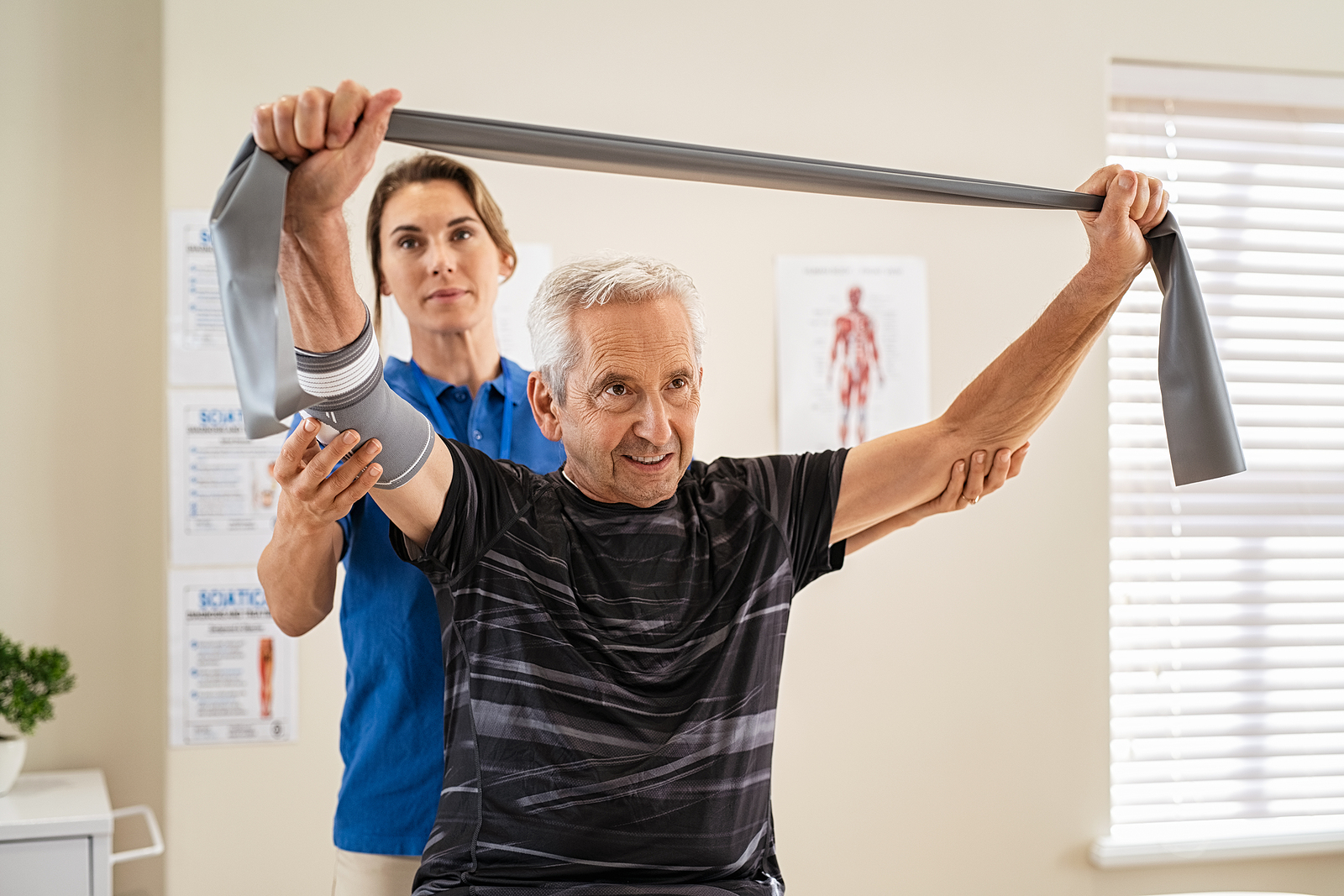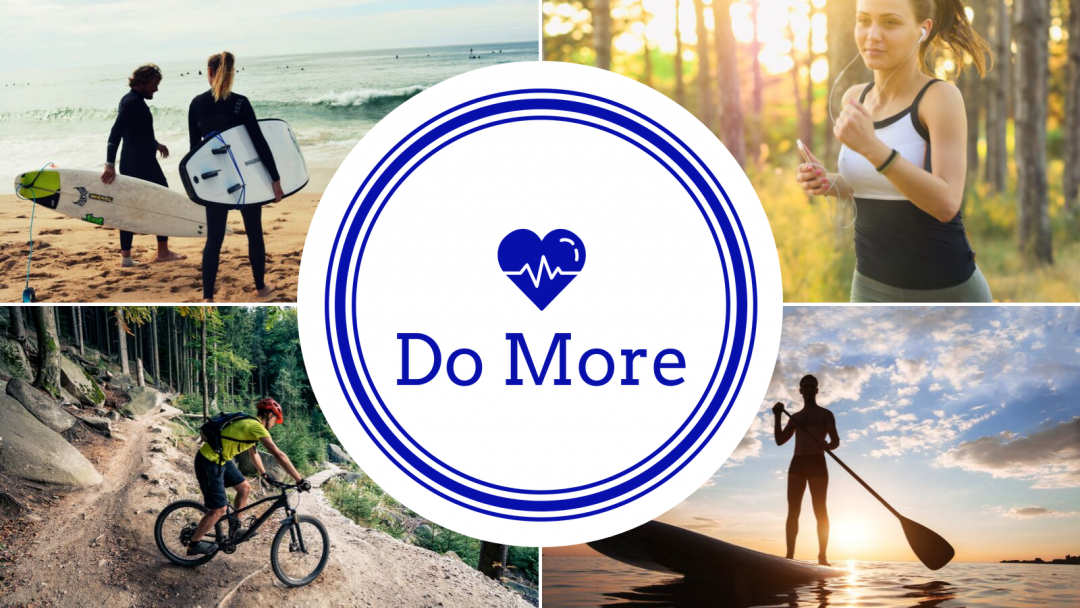Exercise & Safety
Beauty magazines will have you believe ‘exercise’ is intense and hard work. We tend to think it’s either running or in the gym. The delusion is that for most people, this isn’t the case! Most of us carry an injury, a health condition or a preference that means we don’t fit the mainstream.1 This is crucial to understand when asking “Is exercise safe for me?”. The answer is ‘yes’ but it depends on the exercise you choose, how you approach it and how you modify it.
In this article, we’ll explore exercise and safety in general terms. We’ll discuss common symptoms associated with exercise such as pain, breathlessness and fatigue whilst also noting important symptoms that tell us to stop.
For information on specific health conditions, try exploring other articles in the ‘Resources’ section (e.g. Exercise & Osteoarthritis, Exercise & Pregnancy) or speak to your GP, specialist or Accredited Exercise Physiologist.
When To Stop – Red Flags2:
Stop exercising immediately and seek medical help if you experience:
- Chest pain or symptoms that indicate a heart attack: pain in the neck or jaw, pain travelling down the arm or between the shoulder blades.
- Sudden onset of severe breathlessness.
- Sudden onset rapid or irregular heartbeat.
- Feeling faint or like you might collapse.
There are exceptions to these red flags but unless you’ve consulted your GP, Accredited Exercise Physiologist or specialist, the safest option is to stop exercising and seek medical help.
General Advice
When entering an exercise facility, you’ll likely be asked to complete a questionnaire:
“Do you suffer from any medical conditions?”
“Do you suffer from high blood pressure over 140/90?”
…below it will have a disclaimer.
Disclaimer:
If you have answered yes to any of the questions above or are unsure, please seek a referral from your GP or allied health professional before commencing physical activity.2
This is used to identify people who are at a higher risk of adverse events during physical activity.3 Ideally this will inform the exercise practitioners to consult with you and create a safe plan to exercise. Unfortunately, this is often only used to remove liability from the gym owner.
With a third of the Australian population reporting a long-term health condition1, that’s a lot of GP appointments to get approval to exercise. If this is you, I recommend touching base with an accredited exercise physiologist for advice on how to approach exercise to build confidence and pass the pre-screening questionnaire tick box.
Pain
Pain is a subjective unpleasant mental or physical sensation and can be described in hundreds of ways e.g. discomfort, agony, aching, soreness etc. Pain is a common side effect of exercise and can be worsened by an underlying injury or health condition. While avoiding pain is natural, it can limit our participation in activity. It’s therefore important that we take a graded approach.
Generally, ensuring a level of discomfort at/below 4 out of 10 prevents harm or injury.
To reduce discomfort, we can adapt the type of exercise we do (e.g. choosing water-based activities over land-based), the frequency or duration of exercise or reduce the intensity with which we perform the exercise.
For example: with osteoarthritis of the knees, walking short distances may cause a 2/10 on the pain scale. Gentle running on hard surfaces may cause a 6/10 on the scale.
With the example above, we could progress the distance walked or try something pool-based to increase our level of physical activity without causing higher levels of pain.
It’s important to understand that pain during exercise is allowable as long as the individual finds it to be of an acceptable level, and any increase to normal pain and symptoms following the exercise session has reduced to the same level or lower within 24 hours.45
Breathlessness
Breathlessness is a common and expected side effect of exercise, it’s what shows us we’re working harder and is called a ‘physiological response’. Our heart rate and breathing rate will increase to supply our muscles with more oxygen and remove the carbon dioxide they’re producing as they create energy to move more.
For those suffering from cardiorespiratory conditions and/or anxiety, this can be a difficult symptom to manage. How breathless should we tolerate and what is safe?
A method that Exercise Physiologists use to gauge a safe level of exertional breathlessness is the ‘Talk-Sing Test’, designed to grade the level of physical activity intensity.
- If you can talk and sing without puffing at all, you’re exercising at a low-intensity level.
- If you can comfortably talk, but not sing, you’re doing moderate-intensity activity.
- If you can’t say more than a few words without gasping for breath, you’re exercising at a vigorous intensity.
When starting a new exercise, it’s important to start at a low intensity and progress when you feel confident to do so. Taking a graded approach will allow you to acknowledge how your body responds.
If your level of breathlessness increases dramatically without a change in exercise intensity or fails to improve despite stopping, you should seek medical advice. If you feel that the level of breathlessness you experience is disproportionate to the exercise intensity, this could be a sign of an underlying health condition and would be important to discuss with your GP or Exercise Physiologist.6
Fatigue
Similar to breathlessness, fatigue is a normal or ‘physiological’ effect of exercise. It plays a role in protecting us from harmful results of over-exercising.
In simple terms, fatigue can be thought of as the depletion of energy stores fuelling our body to move. The process that causes the sensation of fatigue is far more complex, involving both physical and psychological factors.
When considering fatigue during exercise, two questions arise:
1/ “How much fatigue is acceptable during exercise?” i.e. When to stop
It’s unlikely the non-elite exerciser will need to worry about this. Advice to gauge when to stop includes:
- If technique or performance begins to suffer.
- Long-term: if unintentional weight loss or failure to recover from exercise sessions.
- If other symptoms of starvation or dehydration occur.
2/ “Is it possible to exercise despite fatigue?” i.e. How to move more
Whether you’re new to exercise, unmotivated or managing a mental or physical health condition, fatigue will set in earlier when you first start exercising. Other factors affecting the onset of fatigue, like breathlessness, include the type of exercise, the intensity and the duration and frequency with which you do it. Whatever the cause, to improve your ‘fatigue threshold’, start slowly and gradually improve the frequency, duration or intensity. How you do that is completely up to you, we all have preferences so choose what you enjoy most.
What about chronic fatigue syndrome or Myalgic Encephalomyelitis (ME)?
For condition-specific information it’s best to speak to your specialist, there’s an article on Chronic Fatigue Syndrome in the Resources section also. The advice simply, is to start slow and progress slowly. With certain conditions, there’ll be a level of fatigue, pain, breathlessness etc that you may have to tolerate to see an improvement.
Tips For Safe & Effective Exercise:
Start slowly and progress.
Whatever led you to start moving more is fantastic, but you have a much higher chance of achieving your goal if you’re consistent instead of burning out after a few weeks. Exercise is for life, and you’ll reap all the benefits if you maintain progress!
Wear the right clothing.7
It may sound like a simple point, but it’s easily overlooked. If you’re planning a run don’t wear your flip-flopsthongs, if you’re engaging in combat sports wear a mouthguard and protective gear, if it’s cold wear layers and if it’s outdoors wear sunscreen. The last thing you need when you’re exercising is chafe, blisters, sunburn or injury…
Injury prevention.
If you’re following an exercise plan or have a goal in mind, the main barrier to success is injury. The easiest way to avoid this is to slow down and give your body time to adapt to the new movement, load or intensity. If you have an injury that flares up when you exercise, speak to a physiotherapist to see how you might modify your movement or overcome this hurdle.
Modify!
Exercise is for everyone but not every exercise is for everyone. After you’ve found a movement that you enjoy or want to stick with, make sure it suits you and your body. We’re all built differently so your squat, stride or double somersault pike won’t look like that of the person next to you. Leave your ego at home and modify the range of motion, intensity, movement or duration to ensure you’re progressing steadily and not causing injury.
Finding a program/trainer/exercise specialist.
We underestimate the confidence required to exercise, especially when it’s new to us! Don’t be afraid to ask for help, treat yourself like an athlete, like exercise is important to you, and find a professional to support you. If you’re unsure how to work around a health condition or injury, speak to an Exercise Physiologist and if not, have a chat with a personal trainer (read Exercise & Personal Trainers for help on finding the right one for you).
If you suffer from a health condition or have a barrier to exercising, speak to your doctor about seeing an Exercise Physiologist. They may be able to refer you, with a ‘GP Management Plan’8, to be eligible for Medicare rebates. To find an Accredited Exercise Physiologist or exercise provider that suits your needs – visit the Do More Movement Directory https://do-more.live/activities
Disclaimer: The information and opinions expressed in this article are my own and not the advice of a local health district or governing body. Information has been collected from reputable sources at the time of writing. Always seek the guidance of your doctor with any questions regarding your own health or medical condition.
References:
1. Australian Bureau of Statistics. https://www.abs.gov.au/statistics/health/health-conditions-and-risks. Published 2022. Accessed December 9, 2023.
2. Physical Activity Australia. https://www.physicalactivityaustralia.org.au/wp-content/uploads/2016/09/Pre-Exercise-Screening-Form.pdf. Accessed December 9, 2023.
3. AusActive, ESSA, Sports Medicine Australia. Adult Pre-Exercise Screening. https://ausactive.org.au/policies-guidelines/adult-pre-exercise-screening-system/. Published 2019. Accessed December 9, 2023.
4. T. Skou PT PHD S, Klarlund Pedersen MD DMSc B, Haxby Abbott DPT PhD FNZCP J, Patterson PT B, Barton PT PhD C. Physical Activity and Exercise Therapy Benefit More Than Just Symptoms and Impairments in People With Hip and Knee Osteoarthritis. J Orthop Sport Phys Ther. 2018;48(6).
5. Kraus VB, Sprow K, Powell KE, et al. Effects of Physical Activity in Knee and Hip Osteoarthritis: A Systematic Umbrella Review. Med Sci Sports Exerc. 2019;51(6):1324-1339. doi:10.1249/MSS.0000000000001944
6. Smoliga JM, Mohseni ZS, Berwager JD, Hegedus EJ. Common causes of dyspnoea in athletes: a practical approach for diagnosis and management. Breathe (Sheffield, England). 2016;12(2):e22-37. doi:10.1183/20734735.006416
7. National Institute of Aging. Finding the Right Fitness Shoes and Clothes.
8. Services NSW. Chronic disease GP Management Plans and Team Care Arrangements.







